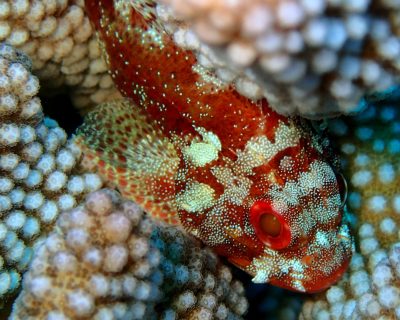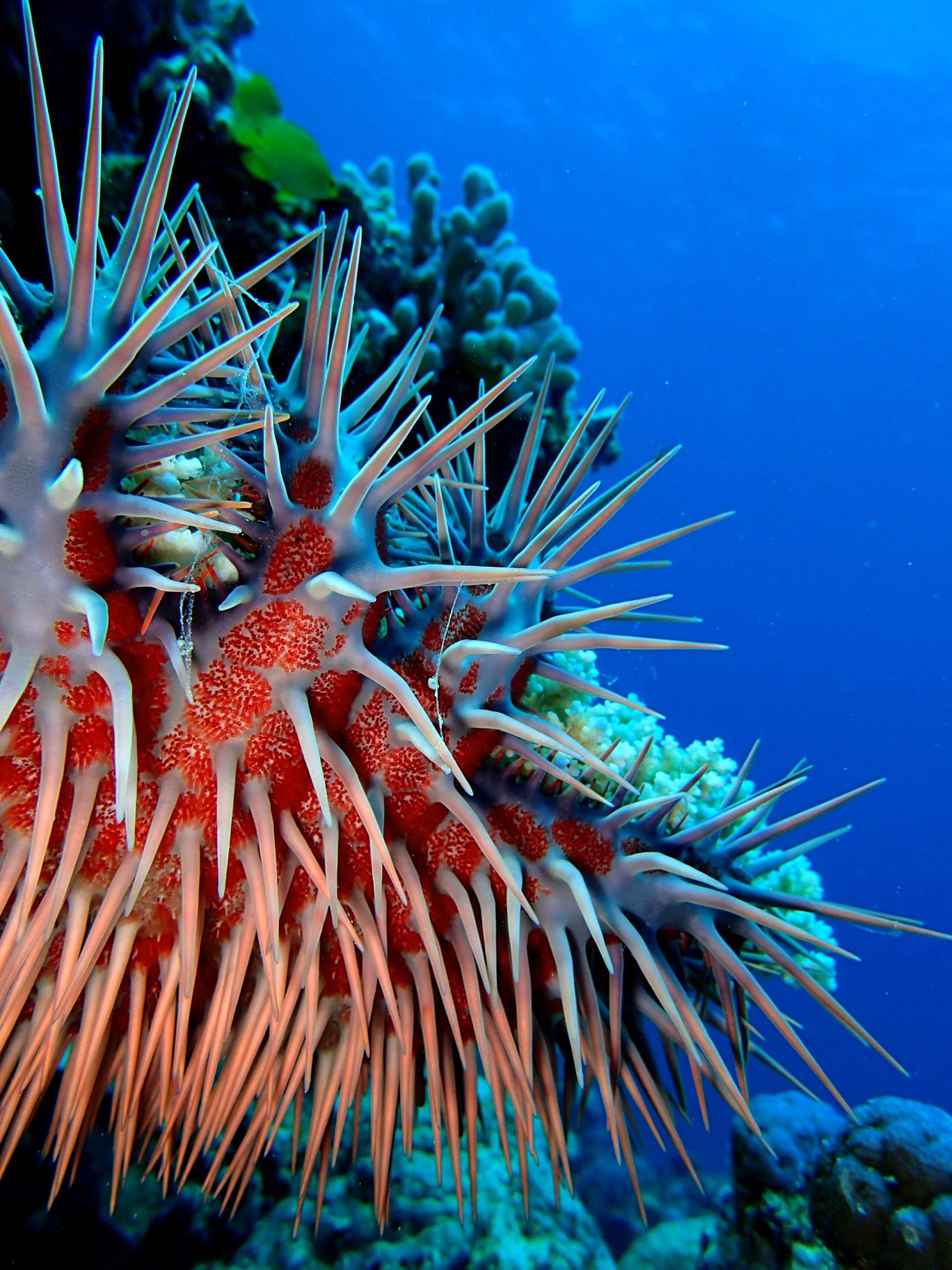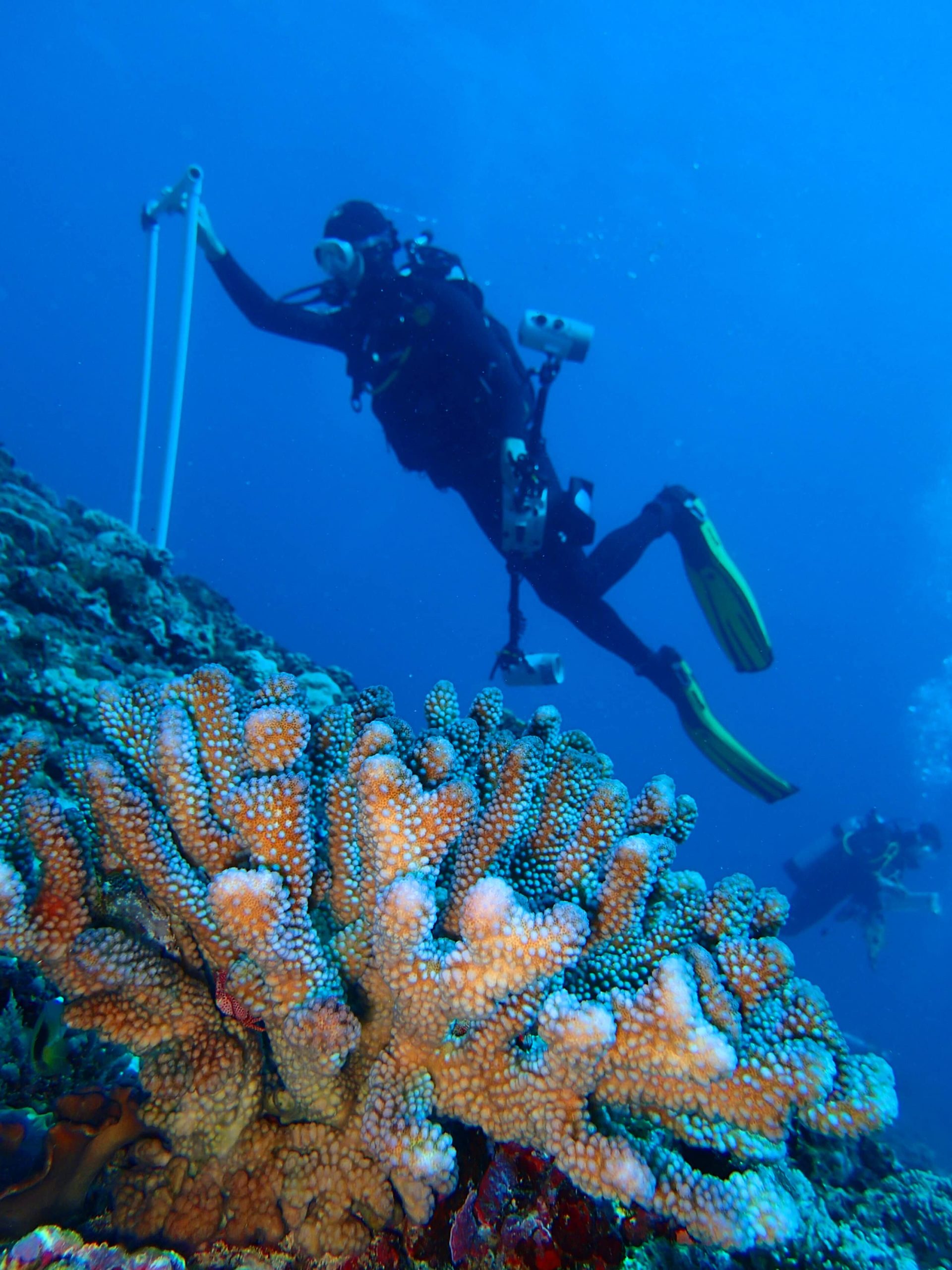As I plunged into the water for my last dive of the day on the western tip of Cook Reef in New Caledonia I was greeted by the sight of many different types of fishes. Along with my dive buddy Kate Fraser, we make up the fish survey team. Our task at each of the SCUBA survey sites is to conduct visual census of the fish along several 30m transects. We make a list of all the species of fish we see along each transect, and estimate their numbers. Between 50 and 150 species of fish are typically recorded at a given site, though the number varies depending on the location, depth, and condition of the reef.
The Lowly Yellow-spotted Scorpionfish
On the last dive of the day, one fish in particular caught my attention – the lowly Yellow-spotted Scorpionfish (Sebastapistes cyanostigma). This member of the Scorpionfish family is small (approximately 5cm) and typically shy. Because of its cryptic nature most divers do not commonly observe it.

A Yellow-spotted Scorpionfish (Sebastapistes cyanostigma) shelters within the Pocillopora coral.
The Scorpion fish takes refuge within the intricate matrix of branching Pocillopora corals. Sheltered within the coral colony they launch ambush attacks on unsuspecting prey. It is very likely that the Scorpion fish spends much of its life within a single coral colony.
Crown of Thorns Starfish, Large-Scale Mortality of Coral Colonies, and the Scorpion Fish
I am fascinated by the close association between the Scorpion fish and the Pocillopora coral. However, I am also concerned for the fish’s future. Pocillopora is not immune to large scale mortality events caused by elevated temperatures, or outbreaks of coral predators such as the Crown of Thorns starfish.

The Crown of thorns starfish (Acanthaster plancii) – A voracious predator of coral.
Any large mortality of Pocillopora reef habitat would severely impact fish such as the Yellow-tailed Scorpionfish, as well as a host of other small fish and invertebrates, that depend on this coral for a home.

The Pocillopora coral colony (foreground). Small fish such as the Yellow-spotted Scorpion fish, crabs and other invertebrates shelter within the club-like branches.
Concern is often placed on the broad scale impacts of climate change to coral reefs, as well as the large charismatic animals, but we also need to think about the plight of smaller species, who may be most vulnerable to reef decline.
Photos: 1-3: Badi Samaniego


